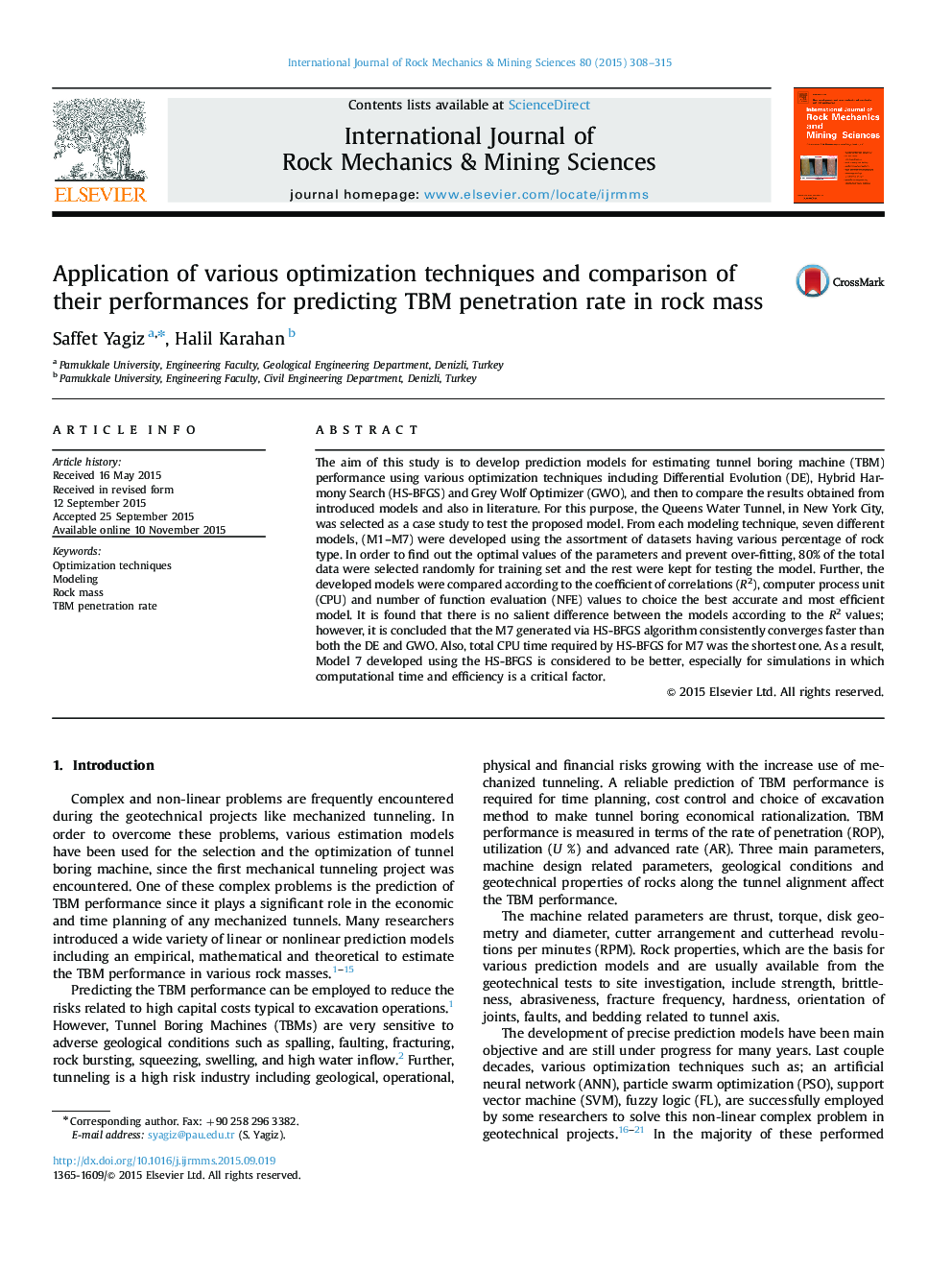| کد مقاله | کد نشریه | سال انتشار | مقاله انگلیسی | نسخه تمام متن |
|---|---|---|---|---|
| 809036 | 1468689 | 2015 | 8 صفحه PDF | دانلود رایگان |

• New optimization techniques are introduced to rock mechanics and tunneling.
• New equations were developed for estimating the rate of penetration.
• The developed models are compared to each other in terms of their performance.
The aim of this study is to develop prediction models for estimating tunnel boring machine (TBM) performance using various optimization techniques including Differential Evolution (DE), Hybrid Harmony Search (HS-BFGS) and Grey Wolf Optimizer (GWO), and then to compare the results obtained from introduced models and also in literature. For this purpose, the Queens Water Tunnel, in New York City, was selected as a case study to test the proposed model. From each modeling technique, seven different models, (M1–M7) were developed using the assortment of datasets having various percentage of rock type. In order to find out the optimal values of the parameters and prevent over-fitting, 80% of the total data were selected randomly for training set and the rest were kept for testing the model. Further, the developed models were compared according to the coefficient of correlations (R2), computer process unit (CPU) and number of function evaluation (NFE) values to choice the best accurate and most efficient model. It is found that there is no salient difference between the models according to the R2 values; however, it is concluded that the M7 generated via HS-BFGS algorithm consistently converges faster than both the DE and GWO. Also, total CPU time required by HS-BFGS for M7 was the shortest one. As a result, Model 7 developed using the HS-BFGS is considered to be better, especially for simulations in which computational time and efficiency is a critical factor.
Figure optionsDownload as PowerPoint slide
Journal: International Journal of Rock Mechanics and Mining Sciences - Volume 80, December 2015, Pages 308–315